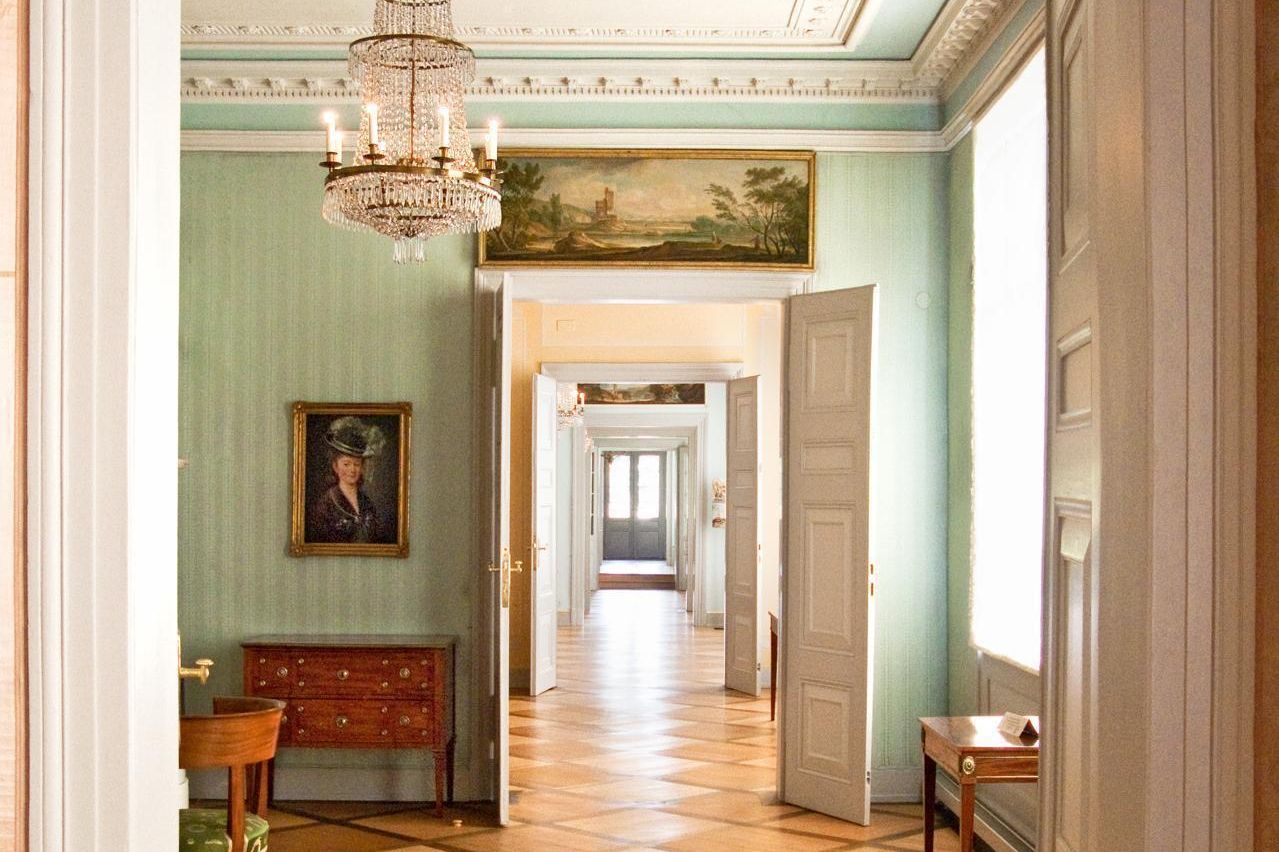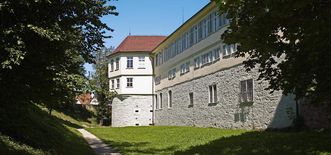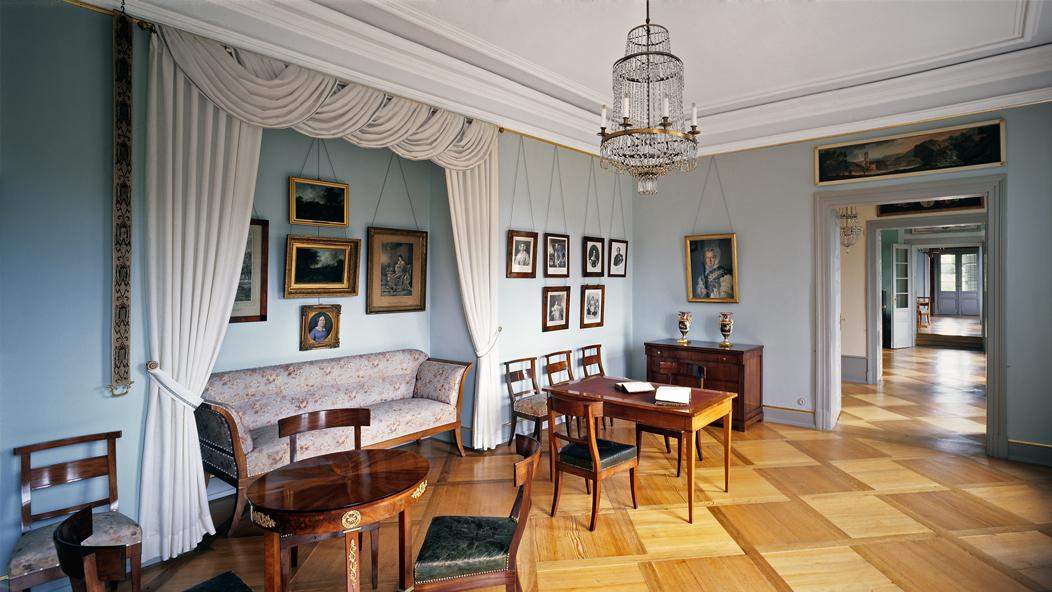Surrounded by trees and a moat, Kirchheim Palace (Schloss Kirchheim) lies in the historic town centre of Kirchheim unter Teck, at the edge of the Swabian Alps (Schwäbische Alb).
A fortress and widow's residenceKirchheim Palace
An attractive Renaissance-style building, Kirchheim Palace is probably the best-maintained example of the fortresses built by the duchy of Württemberg. And as the only remaining widows’ residence, or dower house, it offers a rare glimpse into 19th century home life.
A fortified fortress
Construction began in 1538 at the orders of Duke Ulrich von Württemberg, as one of seven major strongholds around Stuttgart. The building was completed in 1556 under Duke Christoph von Württemberg. The roughly diamond-shaped palace is surrounded by a deep dry moat.
The private residence of noble widows
From the 17 th century onwards, the Renaissance building, with its pleasant courtyard, served the house of Württemberg as a dower house. Its best-known inhabitant was probably Franziska von Hohenheim, who took up residence after her husband Duke Carl Eugen’s death. After she passed away in 1811, the palace became the home of Duke Ludwig of Württemberg, the younger brother of King Friedrich I, and his family. The duke died in 1817. His widow, Duchess Henriette, spent another 40 years at Kirchheim, until her death in 1857. Part of the well-preserved private residence is now a Schlossmuseum (palace museum), which offers fascinating insights into the lifestyle of a noble family in the 19th century.





